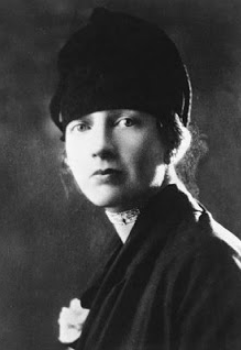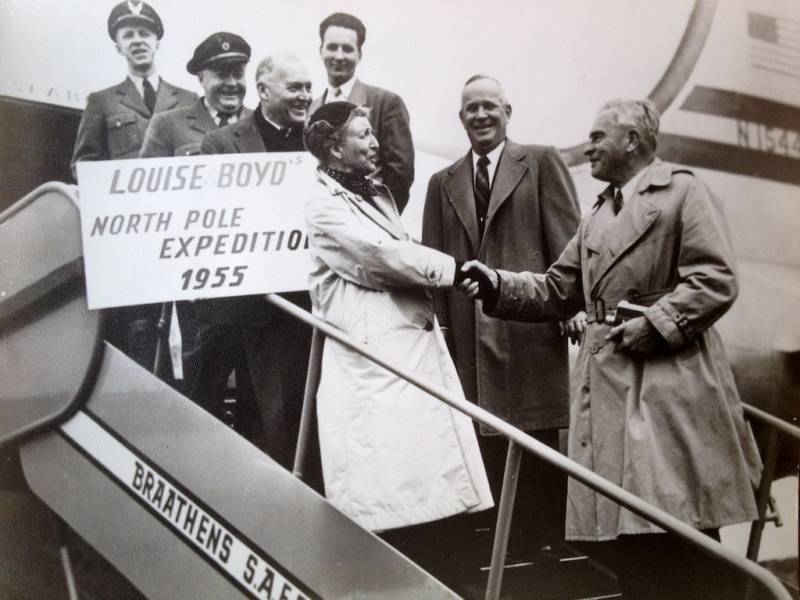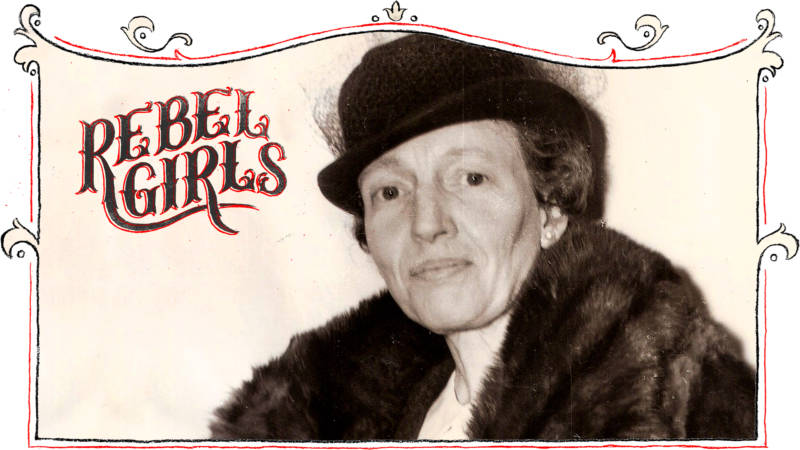 Unperturbed by the fact that men doing the same stuff as her were dying for their troubles, Louise Arner Boyd made Arctic expeditions in 1931, ’33, ’37, ’38, and ’41, in order to photograph and study the landscape and biology of the region, as well as the effects of polar magnetism on radio communications. She was so good at that last one, the US Army gave her a Certificate of Appreciation for her work and gave her a job as Adviser on Military Strategy in the Arctic. During the war, she put her skills to good use in Washington DC as a special consultant to the Military Intelligence Division.
Unperturbed by the fact that men doing the same stuff as her were dying for their troubles, Louise Arner Boyd made Arctic expeditions in 1931, ’33, ’37, ’38, and ’41, in order to photograph and study the landscape and biology of the region, as well as the effects of polar magnetism on radio communications. She was so good at that last one, the US Army gave her a Certificate of Appreciation for her work and gave her a job as Adviser on Military Strategy in the Arctic. During the war, she put her skills to good use in Washington DC as a special consultant to the Military Intelligence Division.
Boyd was utterly fearless and hardy by anyone’s standards. Winter-wear in the last century was basically a combination of mittens, animal fur, and a strong constitution—and Louise Arner Boyd had them all, plus make-up. She once wrote: “I like the pleasant things most women enjoy, even if I do wear breeches and boots on an expedition, even sleep in them at times… but I powder my nose before going on deck, no matter how rough the sea is.”
Boyd immortalized her research in two books. 1935’s The Fiord Region of East Greenland and 1948’s The Coast of Northeast Greenland (which you can still get on Amazon!). “The Ice Queen,” as she was dubbed, was so globally respected for her work that she received a variety of honors from Denmark, Sweden, and France, and had part of Greenland named after her (“Louise Boyd Land” which sits at an elevation of 6535 feet).
Just when it seemed Boyd was settling into a more comfortable role as The Most Interesting Dinner Guest in San Francisco, she very casually decided to become the first woman to ever fly over the North Pole… while she was 67 years old. She completed the 16-hour non-stop flight like a boss, then carried on with her life.

Boyd died in San Francisco two days before her 85th birthday, having spent the entirety of her family’s Gold Rush fortune. Rather than be buried with the rest of her family in their crypt at Mount Tamalpais Cemetery, she opted to have her ashes scattered into her beloved Arctic Ocean.
Boyd’s work remains vitally important. In 2010, Dawn Laurant, chief curator of the Marin History Museum—which was, until recently, located on the site of the Boyd family home in San Rafael—told Marinij.com: “Her photographs, soundings and explorations provide a baseline for a lot of the scientific investigation that goes on today into climate change.”
While Boyd’s brothers have two monuments in their honor in San Rafael—the Boyd Memorial Park and a stained glass window in St Paul’s Episcopal Church—the adventurer herself has, sadly, yet to be honored in a permanent, public way. Boyd donated her library to the University of California, University of Alaska, and to WildCare in San Rafael (which, back then, was called the Louise Boyd Natural Science Museum). The Marin History Museum in Novato is also in possession of some of Boyd’s photographs, research, and journals. Perhaps pay her a visit there.

For stories on other Rebel Girls from Bay Area History, click here.

 Unperturbed by the fact that men doing the same stuff as her were dying for their troubles, Louise Arner Boyd made Arctic expeditions in 1931, ’33, ’37, ’38, and ’41, in order to photograph and study the landscape and biology of the region, as well as the effects of polar magnetism on radio communications. She was so good at that last one, the US Army gave her a Certificate of Appreciation for her work and gave her a job as Adviser on Military Strategy in the Arctic. During the war, she put her skills to good use in Washington DC as a
Unperturbed by the fact that men doing the same stuff as her were dying for their troubles, Louise Arner Boyd made Arctic expeditions in 1931, ’33, ’37, ’38, and ’41, in order to photograph and study the landscape and biology of the region, as well as the effects of polar magnetism on radio communications. She was so good at that last one, the US Army gave her a Certificate of Appreciation for her work and gave her a job as Adviser on Military Strategy in the Arctic. During the war, she put her skills to good use in Washington DC as a 


